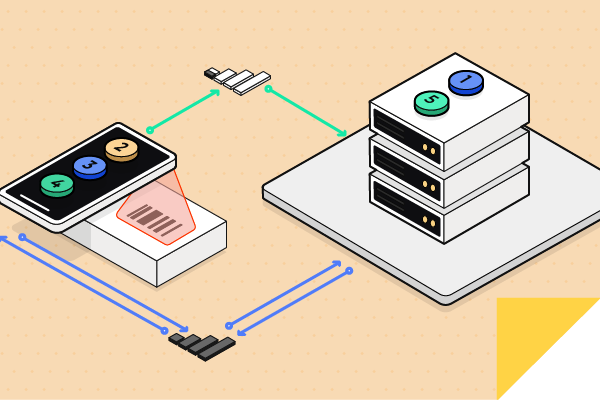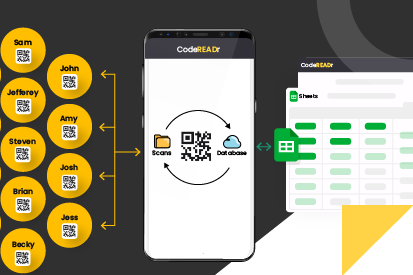Nov. 29, 2021 • 5 min read
Scan QR Codes and NFC Tags Embedded with BSI UPINs to Improve Safety in the Built Environment

What is a BSI UPIN?
A BSI UPIN (Universal Persistent Identification Number) is a unique, constant, and interoperable identifier of products in the built environment. UPINs are offered through BSI Identify, a service introduced on Nov. 15, 2021, by the British Standards Institution (BSI). The service provides manufacturers with a single place to add and maintain their product information in real-time on the web. Please directly contact BSI Identify for details about BSI UPINs.
As it gains traction, BSI Identify will likely become an important tool for improving safety for all stakeholders in the construction industry. We believe CodeREADr could be used to add value for those stakeholders. For example, CodeREADr could be used at construction sites to instantly verify if a product’s BSI UPIN is approved for a particular job or location. In addition, if the product is serialized, manufacturers and contractors could record the origin, processes, and materials used in manufacturing at the item level. This data can be valuable for stakeholders, and especially building owners, should any problem arise with the building.
CATEGORIES
SOCIAL SHARE
Benefits of the CodeREADr Mobile App
- On the receipt of products at the construction site, scan BSI UPINs to verify the UPIN against a list of approved products. See a short YouTube video of the app scanning a QR code. The same flow also works for NFC tags.
- Scan a product’s UPIN and serial number during manufacturing to record processes and materials. The serial number must be unique at the item level. It can be a 1D or 2D barcode or just plain text and read using optical character recognition (OCR).
- Scan UPINs and serial numbers upon installation to collect location data for record-keeping and warranty purposes.
- Store scan records in the cloud to selectively and automatically share scan records with all stakeholders. This is similar to blockchain but in a closed-loop environment.
- Scan online or offline to capture and collect data. Note that Internet connectivity is required to open the product’s webpage.
- Deploy dedicated scanning devices or authorize any smartphone or tablet to scan BSI UPINs based on app-user credentials.
Note: If you are concerned about counterfeiting, NFC tags would be more secure than QR codes, whether at the item level or pallet level. In addition, we can offer methods for Two Factor Authentication (2FA) upon request.
FAQs
How to scan UPIN QR codes and NFC tags?
On the CodeREADr website, simply configure the mobile apps to scan, verify, and record UPINs against a database of approved products for a job or location. No coding is needed. Live chat support is available in real-time while on the website. The apps use the built-in camera of iOS and Android OS devices to instantly scan QR codes, NFC tags, and 45 standard barcode types.
Our employees use dedicated scanning devices from Honeywell and Zebra but our contractors use their own smartphones and tablets. Does the CodeREADr app work on those devices, too?
Yes. The mobile app works with Apple iOS devices and Android OS devices, whether a rugged mobile computer, smartphone, or tablet.
Can I manage which employees and contractors use the mobile app?
Yes. You issue usernames and passwords to control who uses the mobile app. You also control specifically what role they play during manufacturing and transport, and their role at job sites. You can also invite your team members to help administer your services, databases, and users. Single Sign-On (SSO) is available for enterprises to control usernames and passwords.
What does verifying a UPIN mean in this context?
It means verifying that the UPIN scanned is the correct product UPIN meant to be used for the job or location. The scanned UPIN will have a URL that looks like this: https://doi.org/__PRODUCT_UPIN__. The mobile app will scan the QR code and parse out the PRODUCT_UPIN. The app will then compare that UPIN to a list of approved product UPINs for the job. Note: Substituting the actual URL with a shortened URL will not work for this process.
Where can I get a list of approved UPINs for a job?
The list of approved UPINs for a job would need to be created by the stakeholder responsible for defining the products and materials to be used on a job site. That list needs to be uploaded to a database on CodeREADr’s servers. It can also be hosted on external databases.
It’s clear the job site can use the mobile app for verification and historical records. However, why would a product manufacturer use the mobile app?
The product manufacturer benefits by creating a record of the manufacturing processes and materials used to build each itemized product. That record would include both the UPIN and each item’s serial number. The app user at the manufacturing site would scan the UPIN, then the serial number, and add any associated data, e.g. photos, build date, factory, the process used, the materials used, etc. The serial number can be scanned if a barcode, or optically read (OCR) if text, or manually entered.
The ideal use is to share that data with all stakeholders. In that way, each item can be tracked to a job site and even to where it’s actually installed. To do item-level tracking, a unique serial number is needed on the item. The mobile app user would scan both the UPIN and the serial number as part of the scan record.
Note: A special service type is available for track and trace applications. Here’s a description of the Table Builder service and here’s a case study.
What data can be collected with each scan?
Each scan record includes the UPIN, who scanned it, when they scanned it, and where they scanned it (GPS). The mobile app can also collect associated data with each scan, including photos, question-answers, and signatures.
Can I export scan records to my own systems and services? Also, can I share my scan records?
Yes, both are commonly used options. For exporting, we offer integrations with 4,000+ cloud applications. You can also auto-export your records to store third-party databases and servers. And, finally, you can directly integrate with our API and Postback URL tools. For further information, please visit our Integrations page.
Can I configure the CodeREADr app for other uses?
Yes. The same app can be configured for many solutions. For example, it’s often used for asset tracking, inventory audits, warehouse operations, access control, attendance, and many other applications.
What does it cost?
Pricing for the web service and mobile app is based on the number of scanning devices used each month, starting at $14.99 monthly. Please look here for the Pricing page.
Is the CodeREADr platform meant for enterprise use?
Yes. The app has been used at scale in the field since 2009 and has recorded 100s of millions of scans. Accuracy, reliability, security, and privacy are management’s top priorities. A company overview can be viewed and downloaded here.
How do I get started?
That’s simple. On the CodeREADr website sign up for the Free Plan. Then use our Getting Started article in our Knowledgebase to learn where to download the app, test scanning with demo barcodes, and start configuring the app. Be sure to reach out to our support team with the website’s Chat Now utility or via email to support@codeREADr.com.


